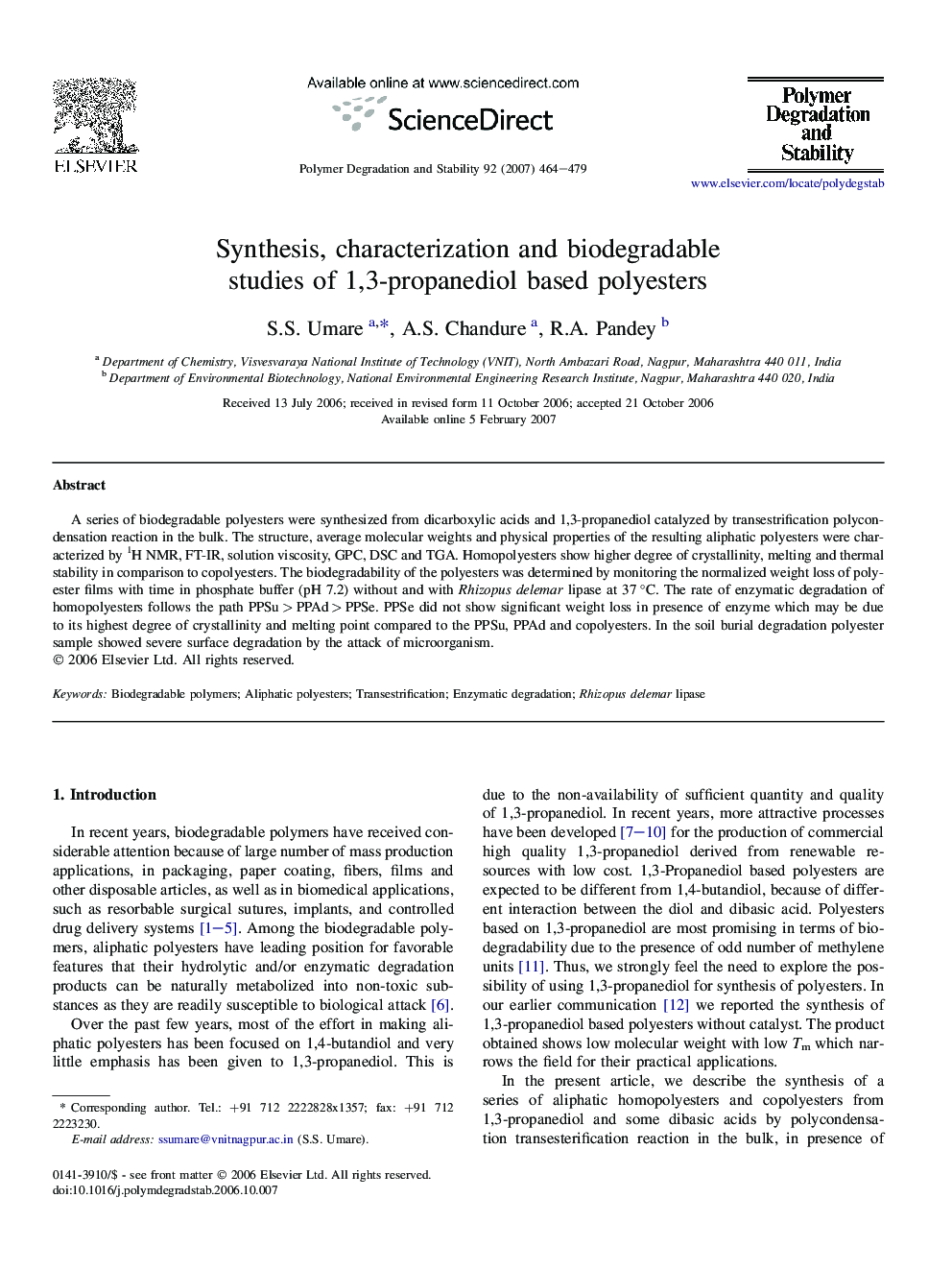| Article ID | Journal | Published Year | Pages | File Type |
|---|---|---|---|---|
| 5204619 | Polymer Degradation and Stability | 2007 | 16 Pages |
A series of biodegradable polyesters were synthesized from dicarboxylic acids and 1,3-propanediol catalyzed by transestrification polycondensation reaction in the bulk. The structure, average molecular weights and physical properties of the resulting aliphatic polyesters were characterized by 1H NMR, FT-IR, solution viscosity, GPC, DSC and TGA. Homopolyesters show higher degree of crystallinity, melting and thermal stability in comparison to copolyesters. The biodegradability of the polyesters was determined by monitoring the normalized weight loss of polyester films with time in phosphate buffer (pH 7.2) without and with Rhizopus delemar lipase at 37 °C. The rate of enzymatic degradation of homopolyesters follows the path PPSu > PPAd > PPSe. PPSe did not show significant weight loss in presence of enzyme which may be due to its highest degree of crystallinity and melting point compared to the PPSu, PPAd and copolyesters. In the soil burial degradation polyester sample showed severe surface degradation by the attack of microorganism.
